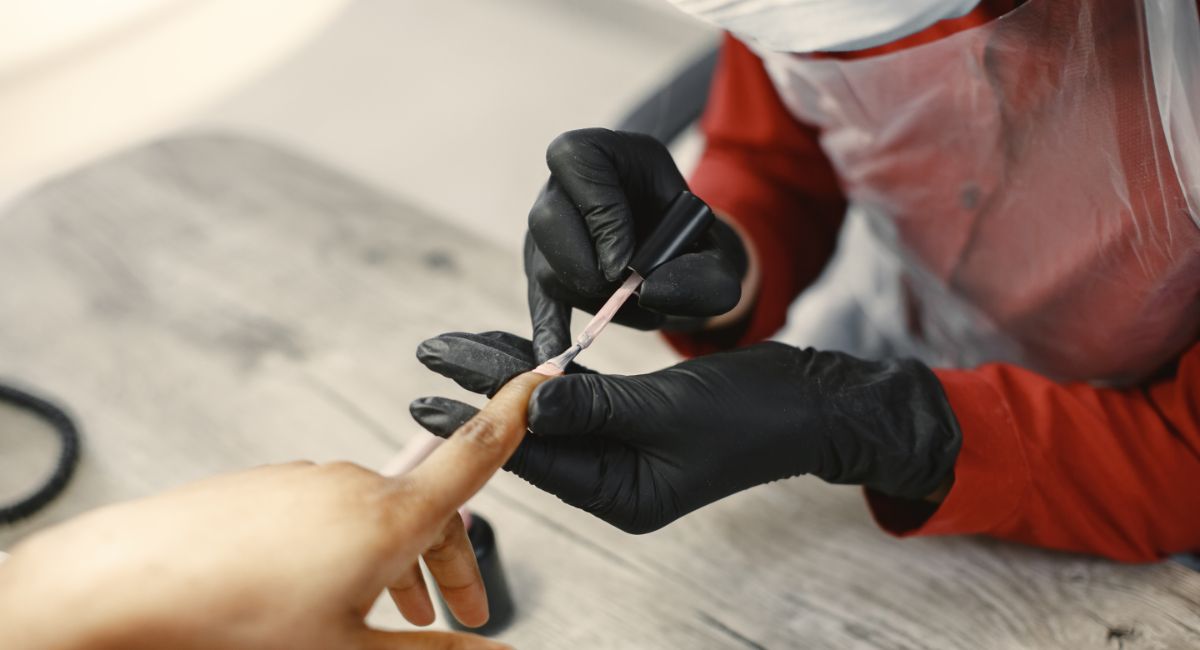A new report published this week by UCLA’s Labor Center and the California Healthy Nail Salon Collaborative finds an overwhelming majority of workers in the sector are grossly underpaid and continue to face other labor issues.
A bill introduced by State Assemblymember Alex Lee, AB2444, looks to address some of the longstanding challenges plaguing the sector.
“Every nail salon worker should have access to decent working conditions and fair pay for their labor,” said Lee during a March 19 press call. AB2444 “sets a foundation for workers to understand their rights and employers to create a fair workplace. It ensures education so there is no confusion about labor status.”
The bill, now making its way through the state legislature, would require the Board of Barbering and Cosmetology to notify manicurists and establishments including nail salons of any changes in the law regarding employment classifications. It would also require the Board to create “culturally appropriate education videos on basic labor laws” that would be required viewing for anyone seeking a license or license renewal.
The number of nail salons in California has doubled over the past decade to 6,147 – or 21% of all nail salons nationwide – many of them concentrated in and around the Los Angeles area, as well as Orange County and San Diego.
Some 127,480 people work in nail salons across the state, most of them women immigrants from Vietnam. Nearly half are between the ages of 45-60, while 43% are limited English proficient.
Nationwide, the industry is valued at more than $8.5 billion.
Among the issues cited in the study was rampant underpaying of nail salon workers, with an average wage of $10.94 per hour, well below California’s $13 minimum wage for businesses with 25 or fewer employees. Most nail salons are classified as “micro-businesses” with five or fewer employees.
One-third of nail salon workers are also classified as self-employed rather than as employees, three times the rate of other workers in the state, weakening workplace protections, and limiting workers’ ability to receive benefits, including paid sick time and overtime pay.
“I want to be classified as W-2,” one worker told researchers, “Because with that I pay taxes. For example, if I become unemployed for any reason, I can still receive unemployment benefits.”
Ongoing exposure to toxic chemicals and a general decline in customers since the COVID-19 pandemic add to the list of challenges confronting nail salon workers.
“California plays a crucial role in the nail salon sector,” said study co-author Preeti Sharma, noting that women in the industry have spent decades advocating for change.
Sharma also highlighted a key finding from the study, the first to survey some 500 nail salon patrons, 87% of whom said they would be willing to pay more for services if it means improved conditions for workers. “This is the first time a consumer survey like this has been done. To be able to say customers are willing to raise prices… that itself is really powerful and customers can reiterate that,” said Sharma.
Benjamin Tran is a policy strategist with Asian Americans Advancing Justice, Southern California, one of the groups sponsoring AB2444. “For most nail salon workers, owners dictate their schedules. So, they should be classified as an employee,” he said.
Tran also pointed out that manicurists were among the groups exempted from AB5, a 2020 law that requires employers to classify workers as employees if they meet certain conditions. “This is creating a perfect storm that risks leaving this workforce behind.”
The study’s recommendations include greater education about labor rights and responsibilities, something ethnic media can play an important role in, says Lisa Fu, executive director of the grassroots advocacy organization California Healthy Nail Salon Collaborative.
“The role of ethnic media is really powerful. This includes radio, TV, and social media,” explained Fu, noting while Facebook and YouTube are widely used channels in the community, there is often scant information on issues impacting workers.
Employers, meanwhile, are also often in the dark about workplace regulations. “They don’t even know what info is available. This is what AB2444 talks about,” Fu explained.
Anh Doan has worked in the industry for over a decade. “This is an industry that has supported the livelihoods of Vietnamese people who have arrived in the US,” she said, describing her efforts to raise awareness about chemical exposure. “A large portion of elderly workers … are allergic to the chemicals they are exposed to at work,” causing headaches, dizziness, and nausea.
Doan was among those who helped conduct interviews with workers for the study. “Many people I spoke with didn’t even know what paid sick leave is,” she said.
Joanne Nguyen has been a manicurist for eight years. “I genuinely love and appreciate the craft and care I put into my work,” she said. “I support AB2444 so workers and owners alike will have the in-language resources necessary to get updated on current laws to improve conditions.”





